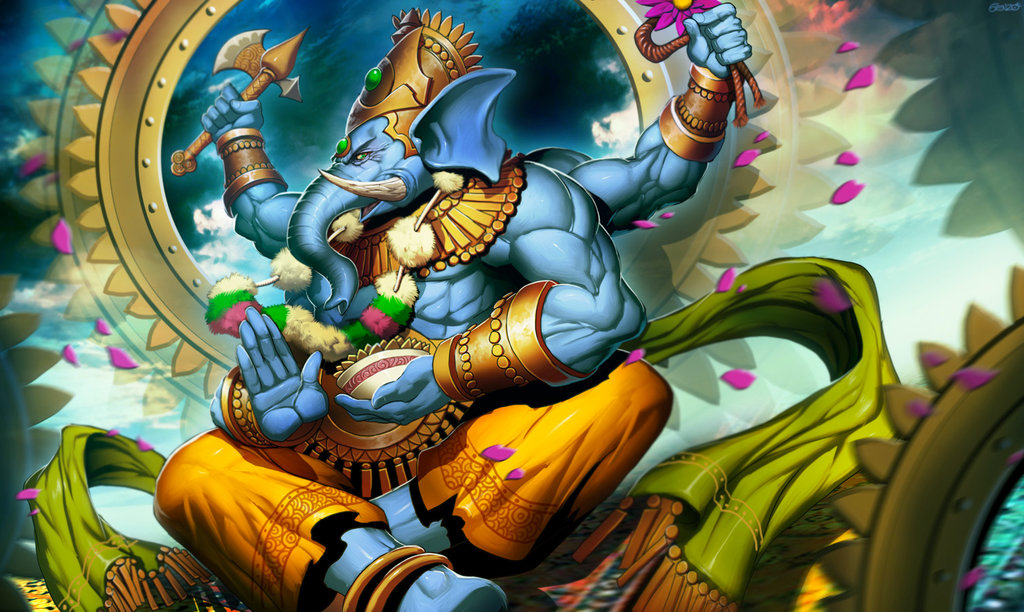
Religious epics and tales are the most common subject matter for artists for centuries.
People across the globe were, are and will be taking inspiration from the epics of Gods and Goddesses by crafting mesmerising pieces of paintings.
If I talk about India, it is known as artist’s paradise owing to numerous themes available here that can inspire an art aficionado.
Traditional, abstract, contemporary and modern paintings have been quenching the thirst of art lovers since these art forms were founded.
I am, however, going to talk about one of the most fascinating and impeccable God of Hinduism that has been inspiring the artists for thousands of years.
The elephant head deity, who is known to remove obstacles in our lives and is the son of powerful God, Lord Shiva and Goddess Parvati. He is Ganesha.
The prominence of this God can be seen in a number of Ganesha art pieces that have been carved by the artisans for a long time now.
We all purchase these appealing Ganesha paintings, but are we all aware of the symbolic meaning of Lord Ganesha’s depiction in these artworks?
Online Art Gallery : The One Stop Shop for Your Gifting Needs
Are you?
If not, you have one less thing to worry. This blog is going to offer you an insight into Ganesha’s Godly figure and interpretation of the same from an artist’s point of view.
Let’s begin with the story of how Ganesha was born:
The tale of the birth of Ganesha
The story of how Ganesha was born is as fascinating as the artist’s work on his life on a piece of canvas utilising colours and strokes of brushes.
Shiva and Parvati were married. Lord Shiva is the ultimate truth, the Adi yogi, the Destroyer and what not.
His devotees have always call Shiva with different names. Goddess Parvati, the wife of Shiva was the source of bringing Ganesha into life.
The birth and re-birth of Ganesha were not natural at all.
Legend says that Parvati created Ganesha using her sandalwood paste in order to guard her door while she takes bath. Hence, Vinayaka (the name given by Parvati to Ganesha) stood guard, until he encountered Shiva.
Both were unaware of each other’s existence that leads to confrontation and ultimately to a ferocious battle. This results in the beheading of Vinayaka.
Parvati, when found this, was devastated and hence in her sorrow threatened Shiva that she will take the form of Goddess Kali and destroy everything.
Understanding the Association of Religion and Art
Hearing this, Shiva told his disciples to bring the head of the first living creature they see. The followers brought back the head of elephant and Shiva by attaching the head to the body made Ganesha.
The name Ganesha is formed with two words; Gan- and esha means the most superior Ganas of Shiva. Since then Ganesha is being worshipped and is celebrated countrywide on his birthday (Ganesha Chaturthi).
A lot of Ganesha art can be witnessed during various festivals exhibiting the popularity this pious deity holds.
Decoding Ganesha
Have you seen any Ganesha artwork or painting? What’d you noticed?
Ofcourse, it’s a human body with an elephant head on it. What else?
Do you know the significance of other details in the physical manifestation of Ganesha?
No?
Let’s take a look:
1. The big head
Being a God of wisdom, the huge head of Ganesha reflects immense knowledge that a brain can hold. Artists have been trying to depict the big head in order to spread the strength of knowledge and wisdom.
2. The other tusk
If you ever see a Ganesha art, try to look more closely. You would notice that a tusk will be always missing. Why’s that?
There are two versions of why one tusk is broken. One narration tells us that it was when Pashuram and Ganesha fought (unknowingly), the former throws a weapon gifted by Shiva. Ganesha recognised his father’s gift and as a token of respect took the blow. This made his tusk broke.
Another incident tells that Ganesha himself broke the tusk using which he wrote the epic tale of Ramayana.
“Did you know that in a Ganesha artwork, reflecting only two hands of this deity is considered a bad omen?”
3. The belly
Another thing noticeable is the humungous belly of Ganesha. Do you know what it means?
Typically, an artist makes Ganesha art with the huge belly to represent that all sorrows and happiness are absorbed by Ganesha. The hidden meaning is that we should be receiving all the sorrows and joy on the same scale.
4. Huge Ears
The humungous ears of Ganesha tell us that he hears everyone’s prayers and oversee no one.
5. Eyes
In Ganesha art, the eyes are extremely small representing the significance of attention and focus. The message is that Ganesha would never leave his devotes. Also, it tells us to keep an exceptional focus in order to gain prowess in our work.
6. The Trunk
The trunk of Ganesha signifies that if you want success, you need to be highly efficient and resilient instead of looking for a shortcut.





















